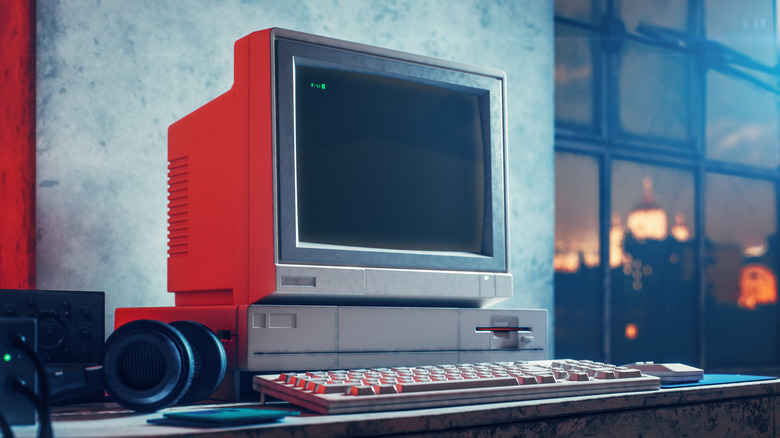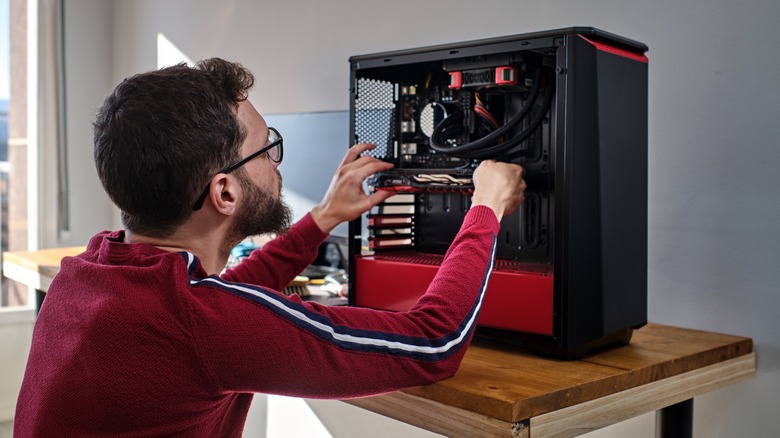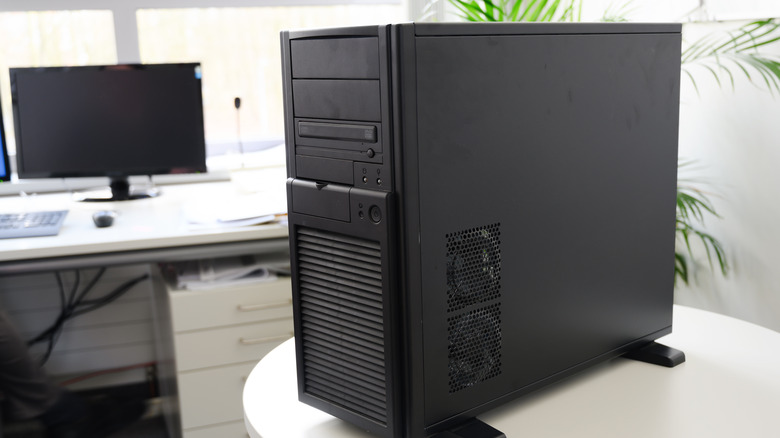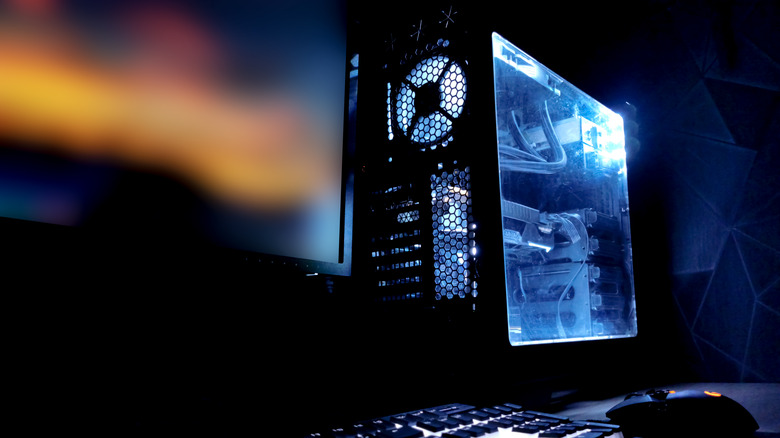How To Make Your Old PC Into A Home Media Streaming Server
Have an old PC lying around that no one is using? You might want to consider converting it into a media streaming server. There was a time when people had separate devices for everything. The TV was for watching broadcast television programs and the radio was for listening to music and talk shows. Things are different now, but many of you might find yourselves juggling multiple devices, each with its own controller, input, and cables. It doesn't have to be that way though. Imagine being able to use your phone to pull up your cousin's wedding video — which is stored on your desktop — and then broadcasting it to your television with the touch of a button.
A home media server makes that possible. It allows you to stream TV, music, games, photos, documents, and more to your home media center and other devices without needing separate accounts and applications. It might seem complicated, but setting one up is surprisingly simple.
A media server is basically just a computer. It uses all the same components that you would find in a typical home PC, but a few applications allow those who install them to use one of these computers as a broadcast hub for all of their other devices. Most of these also allow you to turn any smartphone or tablet into the controller for the entire system if you so choose. Here's how to set one up.
Step 1: Make sure the PC's specs are up to snuff
While it's technically accurate that almost any PC with high-speed internet connectivity can be turned into a media server, it's important to make sure that the one being used is powerful enough to do the tasks a server demands. If your grandpa's yellowed old desktop he got back in the '90s couldn't run Netflix before, installing server software won't suddenly turn it into a media powerhouse. This is doubly true for anyone planning to use their server for playing video games. A media server still needs to have a powerful GPU if you expect it to generate a decent image quality with reasonable framerates.
The specifications required will vary depending on the kinds of tasks that you need them to perform, but here are the minimum specs listed by Plex for a PC to operate as a server: The operating system should be at least as recent as Windows 10 OR Windows Server 2016, the CPU should have at least as much processing power as an Intel Core i3, and it should have at least 2GB of RAM.
Most modern PCs should easily meet these specifications, but it's worth double-checking older hardware before getting started. PCs that aren't up to the task will often cause video, and other, more complicated content, to buffer as the transcoders struggle to keep pace. It also might be a good idea for you to install some extra storage if you have a sizable personal media library you plan to integrate.
Step 2: Choosing a media server platform
Once you know that your PC is powerful enough to handle the rigors of being a media server, it's time to install the software that makes it possible. There are dozens of different providers to choose from, but we've chosen some of our favorites.
Plex is one of the most popular options. It allows you to stream everything from live TV and your favorite web shows to music and podcasts, all using a single application. It also has several organizational features that allow you to curate your media within the app. It even offers a variety of free movies and TV shows for you to stream as part of the service. Initial setup can be a little tricky, however.
Stremio has a similar lineup of features to Plex. It also allows you to stream a wide variety of different media and offers a lot of customization. Some people have found that while Plex offers more control, Stremio's interface is a little more user-friendly.
PlayOn doesn't offer quite the same variety of services as Plex or Stremio, but one unique benefit is that it allows you to record streaming video as an MP4. This is particularly useful for those who want to be able to watch videos offline on their mobile devices to save data or continue watching something after a subscription ends.
Emby is another application that doesn't have quite the same range of functionality as Plex but is generally considered easier to set up and understand. One benefit to Emby is that you can access live TV and DVR without needing a paid subscription.
Step 3: Installation
The exact steps for installing a media server platform are going to depend on which service you decide to go with. Some are more complicated than others, but there are plenty of simple guides for setting up a media library that can give specific instructions for each platform to help streamline the process.
But for all of them, start by setting up the PC and connecting it to the internet. A hardline connection to the router is best, as it will provide the fastest and most stable connection available. This is important since devices will be streaming from the server and slow internet on either end could result in poor connectivity.
Next, make an account with your platform of choice on your PC and then download the application. Again, each of these programs is different, but there should be an option on all of them for setting up the PC as the primary server and selecting which hard drive folders will be integrated into the platform's media library.
Download the application for your chosen platform on your smart TVs, mobile devices, game consoles, and any other devices you plan on using to access the server.
Step 4: Customization
Now that everything is downloaded and installed, it's time to begin the final step: Customizing the user experience. Connecting your personal media to the server platform is the best place to start. Music libraries, video libraries, photo albums, ebooks, audiobooks, and virtually every other type of digital media can all be added to the server so that they can be accessed on other devices. You can move all of your media files into a single folder which will be the place the server software looks for media, or you can individually allow the server software to access the folders where the media is already stored one-by-one. Once that's done, every other device with the platform app will now be able to access those media files remotely so long as the server is turned on.
Many platforms, like Plex, allow you to organize your attached folders and pin your favorites on the app's home screen. You can start with simple categories like 'Movies' and 'TV', but you can also further sort them into sub-categories such as 'Action', 'Horror,' or 'Movies About Dogs That Will Definitely Make You Cry." The sky's the limit! Organizing these different categories on the home page so that they suit your specific tastes allows you to easily navigate your media files and keep the sections you use the most readily available.




